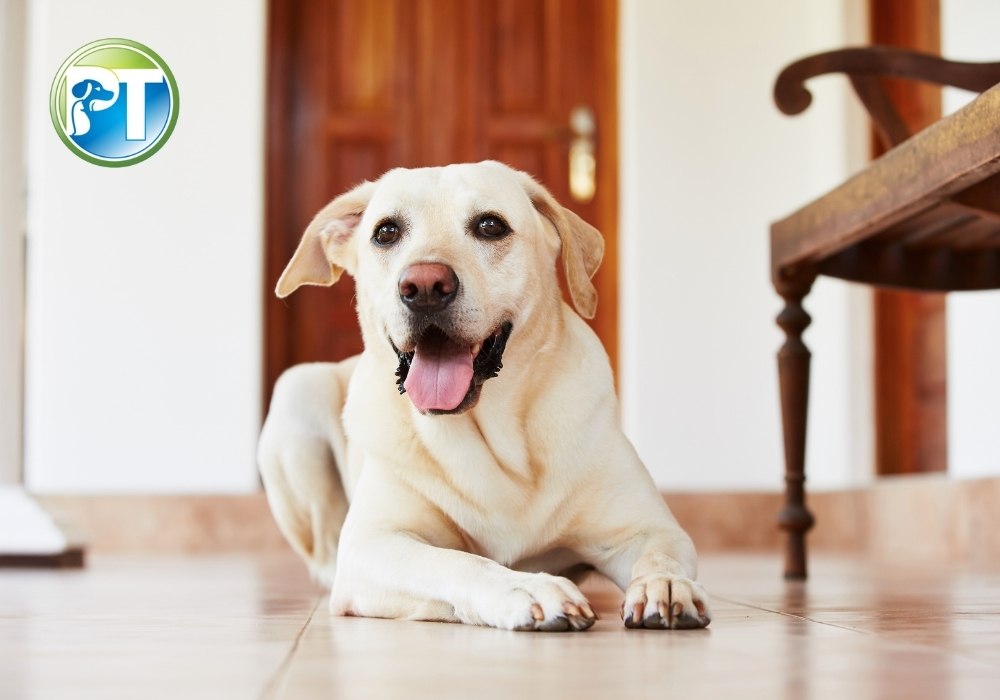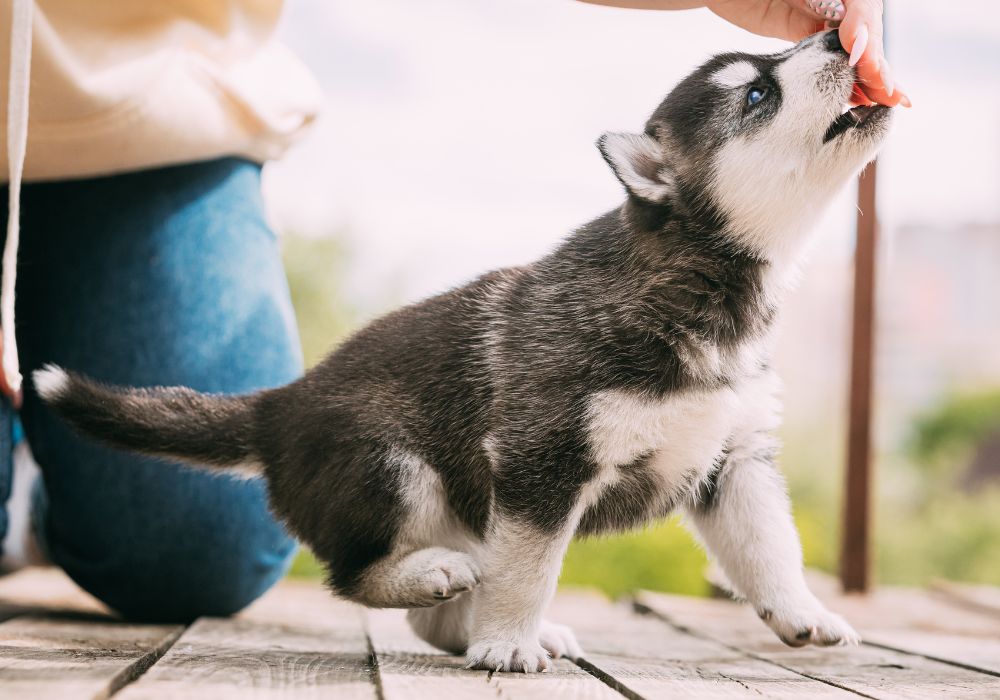5 Common Dog Raising Challenges and How to Solve Them

Bringing a dog into your home is a big decision but also one of the most rewarding. From the moment your puppy arrives, you'll embark on a lifelong journey of companionship, growth, and understanding.
Along the way, you'll likely face some challenges. Whether it's potty accident, chewing, or barking, there will be times when you feel frustrated or discouraged. But it's important to remember that training takes time, patience, and consistency.
This blog will discuss some of the most common dog problems pet owners face. We will also provide insights and solutions to help you confidently navigate these challenges.
5 Common Dog Raising Challenges
1. Potty Accidents

Potty accidents are a common challenge for new dog owners. They can be frustrating and time-consuming to clean up. They can also make it difficult to housebreak your dog. Potty training, also known as housebreaking or housetraining, is the process of teaching your dog to relieve themselves in a designated area.
Potty Training Tips
When it comes to potty training and housebreaking, consistency is key. Here are some general tips:

1. Take your dog outside on a regular schedule.
Puppies need to go to the bathroom frequently, so it is important to take them outside on a regular basis. This will help them learn to eliminate waste outside and avoid accidents in the house. A good rule of thumb is to take your puppy outside every 30 minutes to an hour, even if they don't seem to need to go.
Adult dogs can usually hold it for longer, but they still need to go outside regularly. A good rule of thumb is to take your adult dog outside every 4 to 6 hours, or more often if they are active.
It is also essential to take your dog outside after they eat, drink, or play. This is because these activities can trigger the urge to go to the bathroom.
2. Reward your dog when they relieve themselves outdoors.
When your dog relieves themselves outside, be sure to praise and reward them to positively reinforce this behavior.
Punishing your dog for having an accident in the house is not an effective way to potty train them. It can only make the problem worse.
Dogs may not understand why they are being punished. This can make them afraid to go to the bathroom in front of you. They may also start to hide their accidents or try to hold it in for too long, which can lead to health problems.
Clean up any accidents immediately with an enzymatic cleaner. This will help remove the odor, discouraging your dog from going in that spot again.
2. Chewing

Chewing is a natural behavior for dogs. It is their way to explore their environment and learn about their surroundings. It can also be a way for dogs to relieve boredom or stress. However, chewing can be destructive, especially if your dog chews on furniture, shoes, or other belongings.
Here are some tips for dealing with chewing in dogs:
There are a variety of chew toys available. However, some chew toys can be dangerous, especially if they are made of materials that can splinter or break off. It's important to select chew toys that are suitable for your dog's size and chewing habits.
Keep an eye on your dog when they are chewing. This means being in the same room and paying attention to their actions. This will help prevent them from chewing on anything they shouldn't.
If you see your dog chewing on something they shouldn't, offer them a safe chew toy instead.
This command can prevent your dog from chewing on furniture or belongings.
Use their favorite toy and engage in a gentle game of tug-of-war. When it's time to let go, say, "drop it." If they release the toy, reward them with a treat.
3. Barking

Barking is normal for dogs but can become problematic when excessive or disruptive. There are many reasons why dogs bark. So, the best way to deal with barking will depend on the reason behind it.
Possible Solutions
- Mental and Physical Stimulation
Boredom often leads to excessive barking. Engage your dog in regular exercise, interactive play, and puzzle toys to keep them mentally and physically stimulated.
- Counter-Conditioning
For anxiety-related barking, gradually expose your dog to the triggering situation or noise. Do this in a controlled and positive manner, rewarding them for staying calm.
- Using Bark Collars

Consider employing dog bark collars in cases where excessive barking persists despite other efforts. These anti barking collars emit a corrective stimulation when your dog barks. When choosing a no bark collar, opt for those with adjustable settings to ensure a humane and controlled response.
4. Jumping

Jumping is another natural behavior in dogs, often driven by their excitement to engage with people or other dogs.
Dogs jump for various reasons, which may include:
- Excitement
Dogs often jump when they are excited to see someone or something. This is especially common in puppies, who are naturally more energetic and impulsive.
- Greeting
Dogs may jump up on people as a way of greeting them. This behavior is typical in some breeds, such as Labrador Retrievers and Golden Retrievers.
- Playfulness
Dogs may also jump up as a way of playing. This is especially common in puppies, who are still learning how to interact with people and other dogs.
- Lack of Socialization
Without proper socialization, dogs may not know that jumping isn't an appropriate way to greet people. This is more common in male dogs and dogs that have not been properly socialized.
Training Tips
Teach your dog to offer a paw or sit instead of jumping when excited.
For particularly exuberant dogs, keep them on a leash when greeting guests until they've calmed down. This prevents them from jumping and reinforces the concept of calm greetings.
Train your dog to sit or stay before receiving attention. Consistently reinforce this behavior, rewarding them for obeying your command.

An e collar provides gentle correction to deter unwanted behavior in dogs. This can give you greater control over your dog, which helps prevent undesirable behaviors, such as running away or jumping. E collars for dogs can be an effective training tool when used correctly.
5. Aggression

Aggression in dogs can stem from various factors, including genetics and environment.
Common causes of aggression include:
- Fear
Dogs may become aggressive if they fear something, such as other dogs, strangers, or loud noises.
- Pain
If a dog is in pain, they may become aggressive as a way to protect themselves. This is because pain can make dogs feel vulnerable and threatened.
- Possessiveness
Dogs may become aggressive if they feel possessive of something, such as food, toys, or their owners.
- Lack of socialization
Dogs that haven't undergone proper socialization are at a higher risk of developing aggressive behavior.
- Genetics
Some breeds of dogs are more prone to aggression than others.
Here are some possible solutions for dog aggression:
- Desensitization
Desensitization works by gradually exposing your dog to the things they are afraid of in a controlled environment. For example, if your dog is fearful of other dogs, you might start by showing them pictures of dogs from a distance. The goal of desensitization is to help your dog associate what they are afraid of with positive experiences.
- Training
Many types of training can be used, such as obedience training and behavior modification. Obedience training teaches your dog to learn basic commands, such as “sit,” or “stay,” and "come." Behavior modification training can help your dog learn new behaviors, such as how to interact with other dogs in a non-aggressive way.
A Gentle Companion in Training
Chewing, barking, jumping, and aggressive behavior are just a few of the common challenges in raising a dog. While there is no one-size-fits-all solution for these challenges, there are products that may help. One such product is the PSSSTTT!! Pet Corrector Spray.
Why Choose PSSSTTT!! Pet Corrector Spray for Dogs?

PSSSTTT!! Pet Corrector Spray for Dogs is a training aid that uses a harmless hiss of air when activated. It enhances your existing training strategies with effective interruption.
How Does a PSSSTTT!! Pet Corrector Spray Work?

This dog corrector emits a hissing sound that mimics natural warning sounds. It can be used to interrupt unwanted dog behaviors, redirecting their attention back to you. This allows you to retrain the behavior without distressing your furry friend.
Consider it as a soft-spoken assistant, helping you gently guide your dog away from behaviors like excessive barking, chewing, and jumping. It is safe, effective, and easy to use.
If you’re looking for a gentle approach to training, this pet corrector spray is an excellent option. The spray is available in 12 fl oz and 3.5 fl oz. Order yours today and see the difference it can make!
You might also enjoy...
-
Posted in
E-Collar Info & Guides, Training Tips


